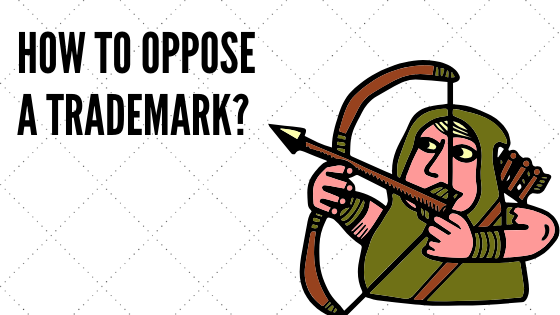
How to Oppose Somebody Else’s Trademark
During the trademark registration process, a trademark application is published so that any third-party who believes that they will be harmed if the application is registered can file an opposition to prevent that from happening. If no one opposes the mark during this time, the trademark will usually go on to be registered.
But, how do you oppose the registration of a trademark that is confusingly similar to yours? Likewise, how do you oppose a trademark that has already been registered but that infringes upon your prior trademark rights?
What follows here is a list of things to consider and steps that you need to take to oppose somebody else’s trademark:
1. Don’t Miss the Deadline to File a Trademark Opposition
If you catch an offending trademark during the publication period, you can file an opposition to that trademark application to attempt to prevent it from being registered. You typically have between 30 and 90 days to file an opposition. However, some countries will allow you to extend this term for an additional 30 to 90 days, while others will not. In the US opposition period is 30 days, in Canada and Australia – 2 months; in the EU, UK, Germany and China it’s 3 months.
If you missed the window to oppose a trademark application during the publication period, you may be able to have the trademark cancelled after it has been registered. The exact process differs from country to country, but in most cases, the national trademark authority offers a process by which you can oppose a trademark that has already been registered and have it revoked or invalidated.
2. Assess How Similar the Trademark Is To Yours
Trademark owners often utilize trademark monitoring services (like Trademark Angel’s Confusion Watch Service) to let them know whenever somebody is attempting to register a trademark that is confusingly similar to theirs. The trademark owner and their attorney will then assess any offending mark by asking the following questions:
- Is the mark really similar to yours? How so?
- Are the goods and services for which the mark is being registered similar? To what extent?
- Are the channels of trade the same?
- Will the underlying goods be marketed to the same consumers?
If the answer to any of these questions is yes, then opposing the trademark’s registration may be the right thing to do. If you are still unsure, then before deciding to oppose, it may be worth asking a few uninterested parties if they also find the mark to be confusingly similar to yours.
3. Determine If You Have Sufficient Grounds To Oppose The Trademark
You may only oppose a trademark if you have a real or a legitimate stake in its outcome. In most countries, this means having a previously registered trademark or being able to demonstrate earlier use of a mark that is the same or very similar to the one being opposed.
If you claim to have prior rights in a mark that is confusingly similar to the offending mark, proof of registration will usually be sufficient, as long as you can show that your rights in that mark will somehow be diminished.
While you can file an opposition without having registered a trademark yourself, this may make it much more difficult for you to win. So, if you haven’t registered your trademark, you should file your trademark application before you oppose.
As for the actual grounds for trademark opposition, the most frequently used is a likelihood of confusion. Other grounds for opposing a trademark include:
- The mark is generic in relation to the goods and services for which it is being registered;
- The mark is purely descriptive in relation to the underlying goods and services;
- The applicant doesn’t genuinely intend to use the trademark in commerce; and
- If registered, the trademark would potentially dilute the value of a mark which enjoys common law rights.
The bottom line here is that registration of the trademark will somehow harm you, your brand, and/or your business directly.
4. Determine If You Have the Budget For A Possible Trademark Opposition
Though there may be certain differences, the procedures for opposing a trademark are generally the same from country to country. You usually initiate the procedure by filing a document called a petition or a notice of opposition and paying a government fee (usually a few hundred dollars, for example, in the US the government fee to oppose a trademark is US$600 per class; in Canada it’s C$1,085.76 per trademark and in the EU it’s €320).
But, while trademark oppositions are easy and inexpensive to initiate, they can go on for years and cost you tens and even hundreds of thousands of dollars before being resolved. If you don’t think you have the budget to fund an opposition all the way to a win, it may not be worth filing an opposition at all.
5. Decide if You Wanted to Settle the Trademark Opposition Case
You may not have a problem with the other party’s trademark, as long as they amend the application or registration to exclude certain goods. In some cases, you may even ask the other party to enter into a coexistence agreement, which is an agreement between two users of similar marks that wish to use their marks without infringing on one another.
For example, you may propose that the other party limit the underlying goods and services, or that they refrain from using the mark with certain other words. Similarly, you may ask the other party to agree to only use their mark in a certain form, for example, as a stylized mark or with an image but not as a standard character wordmark.
By settling the issue in this way, you can save both you and the other party a lot of time and money, while still protecting your brand. Bear in mind, however, any agreement you make to accommodate a mark that may be confusingly similar yours will also weaken the strength of your trademark to some extent.
6. Find A Professional To Oppose the Trademark On Your Behalf
The majority of trademark oppositions is resolved early on through some type of agreement and, in some such cases, maybe resolved without the use of an attorney. However, as opposition cases can be very complex and full of potential pitfalls, it is usually best to engage an attorney to assist you throughout the process, if you have the resources required.
7. Be Patient As Trademark Oppositions Take Time
Trademark oppositions are nothing more than federal lawsuits on paper, but they can be very long and drawn out adversarial proceedings. So, if you decide to oppose, be prepared to be involved with the case for 18 months or longer if the issue can’t be settled early on.
8. Follow the Course
If you are concerned about how somebody else’s trademark will affect yours, it is likely because your trademark is very important to you and a valuable part of your business. Therefore, once you and your attorney have decided upon an appropriate course of action, follow the plan until the case has been settled or has been litigated to the end and you have reached your desired result.
For more information about opposing someone else’s trademark, or any other trademark issue, please feel free to contact Trademark Angel at 226.246.2979, or visit our contact page to arrange an initial consultation.





